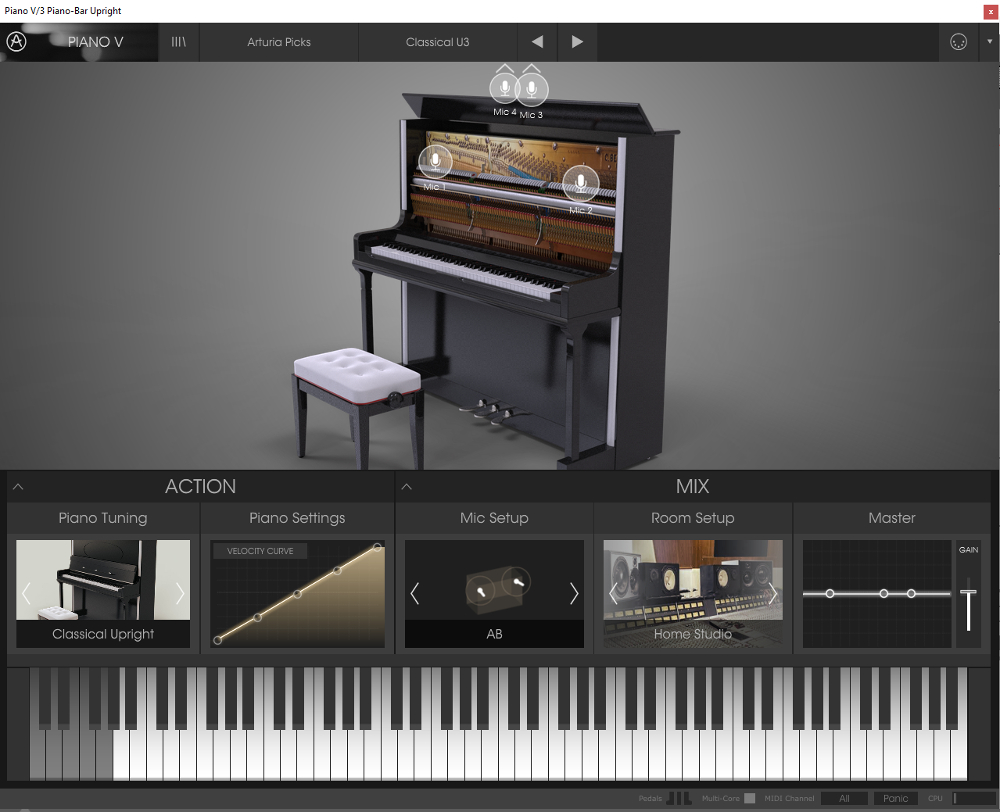

The small but crisp OLED display is perfect for offering some feedback to the user and it’s done in a very cute way, with three elements on show as test tubes and lab-styled beakers, which are filled or emptied according to which corresponding control you turn. However, this level of control over the wave itself allows for real detail.

There are plenty of more basic subtractive waveforms included, albeit in a digital guise. It has an open-source approach to design and this has allowed Arturia to add extra functionality to the MicroFreak that’s previously been seen on Mutable’s own Braids and Plaits oscillators. Mutable is one of the most highly regarded Eurorack companies, producing some very desirable modules that cover the whole gamut of Eurorack, synthesis and modulation sources. In a departure from Arturia’s normal modus operandi, the oscillator is firmly digital and is present thanks to a little help from another French company – Mutable Instruments. Power is provided via an external DC power supply, although it can also be powered via the USB socket, from a computer or phone charger.Īll of these features are a distraction from what I consider the main event, which is the oscillator section. Interestingly though, it is also equipped with a CV/Gate Output, allowing for easy connection to Eurorack.Ī single audio output is offered, while there are syncing options with a clock connection going in both directions. It’s also fully equipped with MIDI I/O (via breakout cables) and MIDI over USB, so without overstating the obvious, if you struggle with the nature of the keybed, it’s going to be simple enough to plug the MicroFreak into a DAW or larger keyboard, for more serious piano-like duties. It’s fair to say that these keybeds are something of a Marmite flavour conventional keyboard players are likely to struggle with the lack of movement offered, as fingers hit the hard capacitive surface.Īnother nod to the West Coast ideal is that the capacitive nature of the keybed offers polyphonic aftertouch. He is largely credited as being one of the pioneers for control of synths through capacitive technology, which would often not take the form of a regular musical keyboard. He never liked calling his machines ‘synthesizers’, as it conjured up an image of a synthetic world which made him uncomfortable. The other weight-limiting factor is the lack of a regular keybed, which is something of a point of reverence to the West Coast synthesis ideals of Don Buchla. While some people might run a mile at the sight of the ‘D’ word, digital oscillators have an unbelievable amount to offer and the MicroFreak boasts no less than 11 oscillator modes, some of which are likely to surprise. Part of the reason for its diminutive size could be because of its largely digital makeup. The MicroFreak weighs in at a kilo and is just over 300mm wide.


 0 kommentar(er)
0 kommentar(er)
